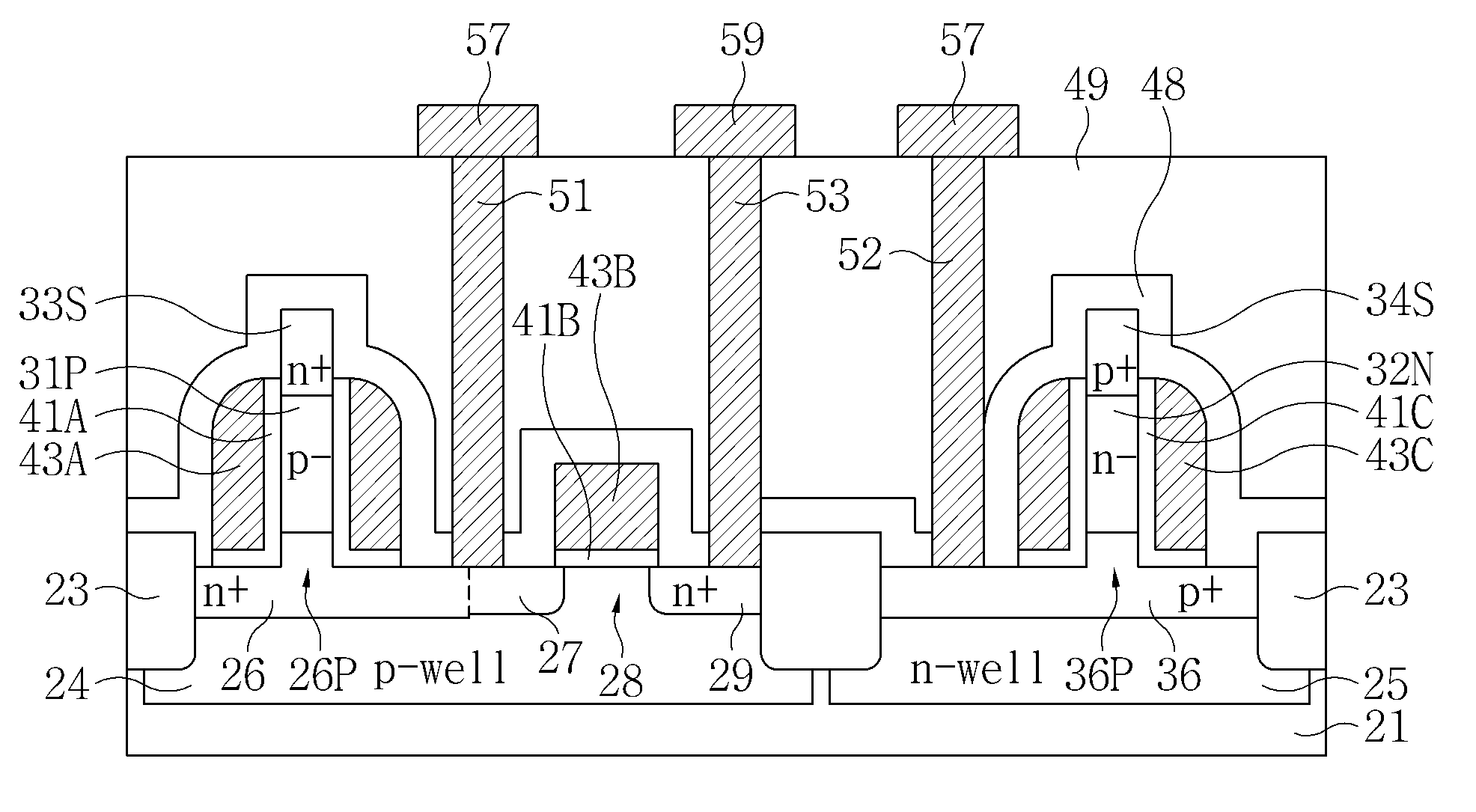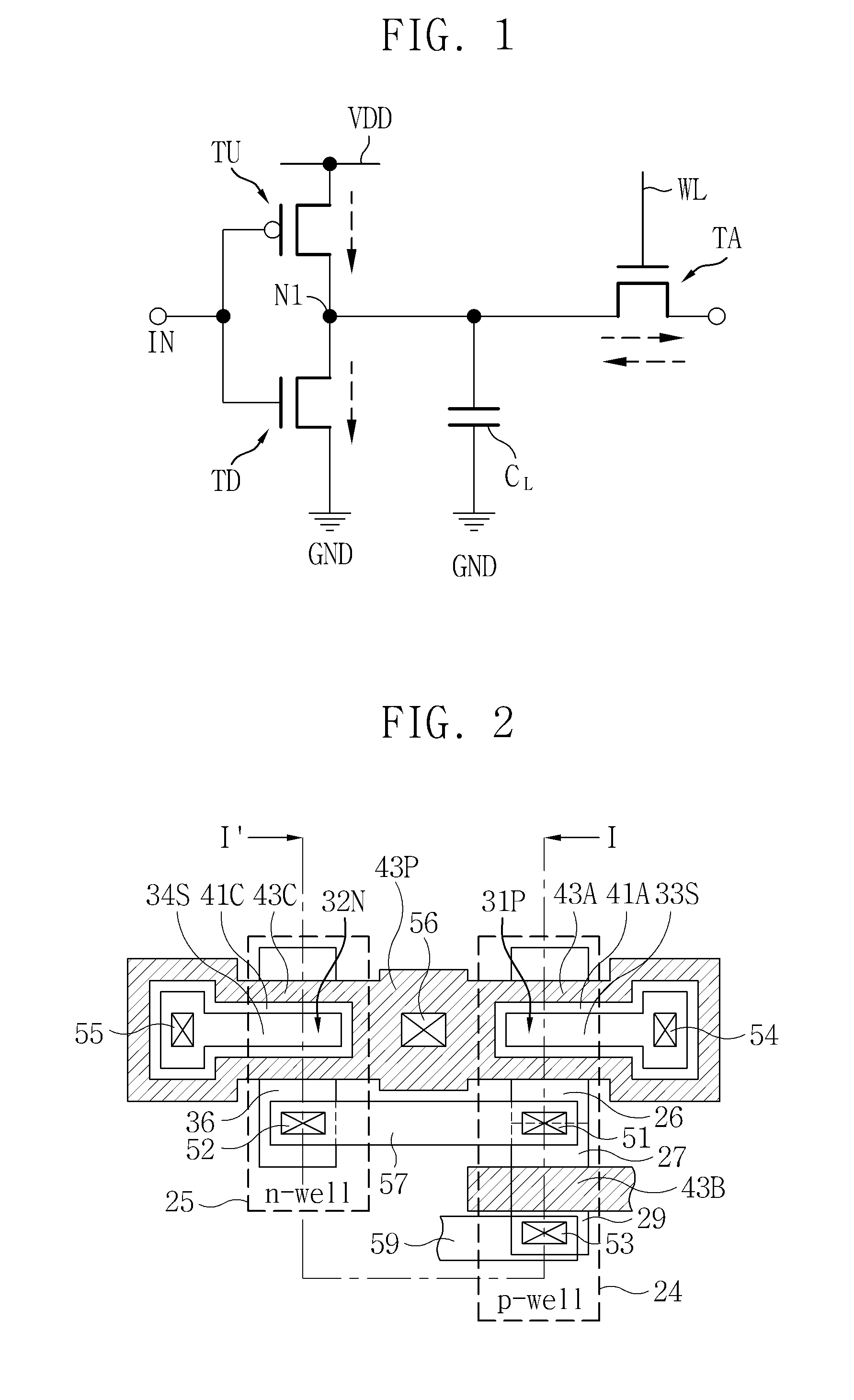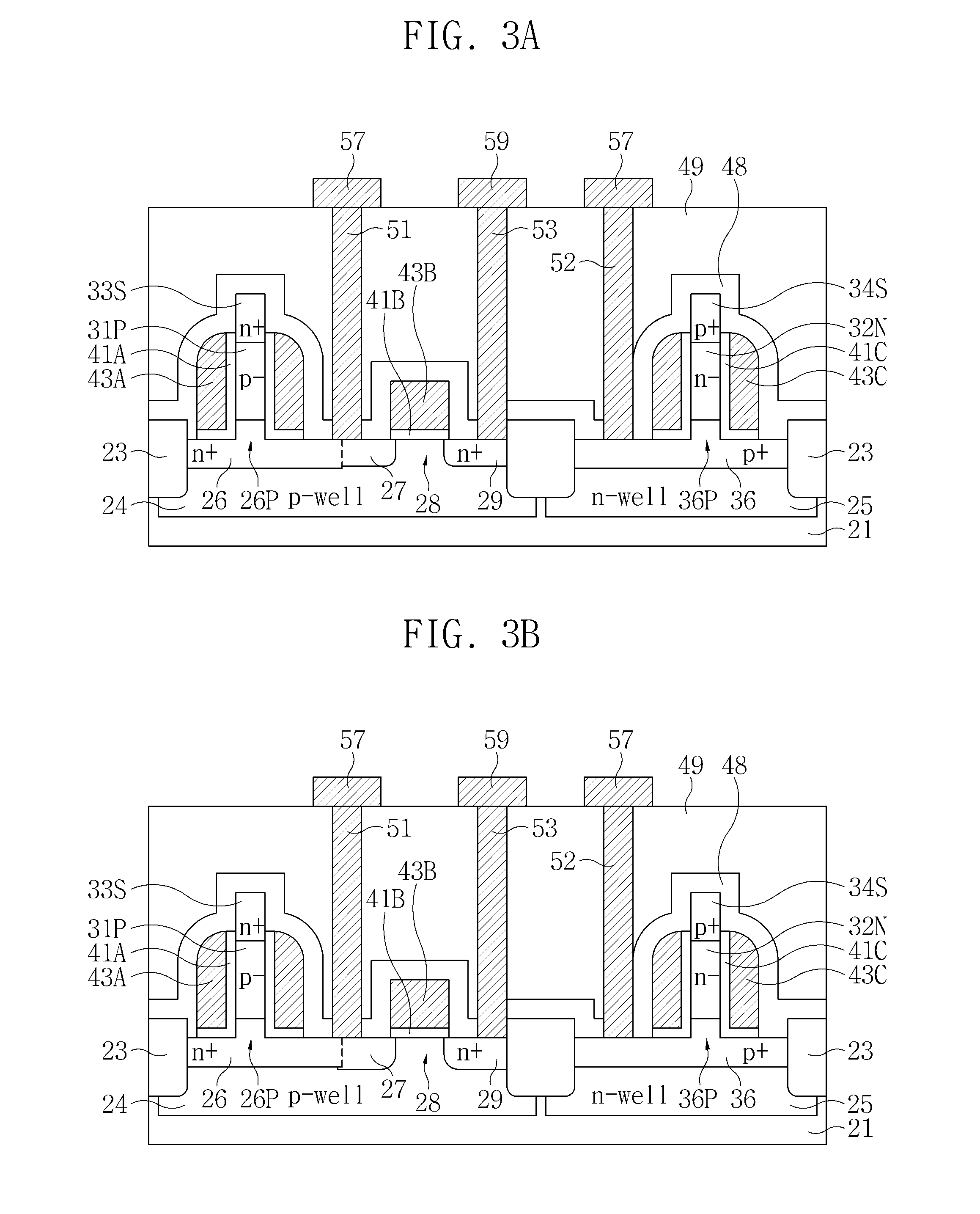Semiconductor devices having vertical device and non-vertical device and methods of forming the same
- Summary
- Abstract
- Description
- Claims
- Application Information
AI Technical Summary
Benefits of technology
Problems solved by technology
Method used
Image
Examples
embodiment 1
[0182]In an ultrathin body (UTB) SOI device or in a nanowire device, which are expected to be applied in the future to sub-20 nm devices, since the dopant of a channel region has little effect on the threshold voltage VT of the resulting device, such devices still do not solve the problem of heightened leakage current. Further, the approach of controlling the threshold voltages of devices by varying channel length is limited in viability since threshold voltage can be controlled only within a limited range and such variation in channel length is unsatisfactory in terms of integration density.
[0183]To obtain a low-power, high-speed circuit, the present inventive concepts provide semiconductor devices and methods of fabrication embodying multiple-threshold-voltage VT structures which have relative low leakage current characteristics.
[0184]FIG. 1 is an equivalent circuit diagram of an electronic circuit including a complementary-metal-oxide-semiconductor (CMOS) inverter according to em...
embodiment 2
[0213]FIG. 4 is a cross-sectional view of a semiconductor device according to a second embodiment of the inventive concept.
[0214]Referring to FIG. 4, in this embodiment, a p-vertical channel region 31P and an n-source region 33S may be formed on an n-drain region 26. First insulating spacers 63 may be formed on sidewalls of the n-source region 33S. The n-drain region 26 may include an n-protrusion 26P that extends in the vertical direction. A first gate dielectric layer 41A and a first gate electrode 43A may be formed on sidewalls of the p-vertical channel region 31P.
[0215]The p-vertical channel region 31P may have a width in the horizontal direction that is less than that of the n-source region 33S. The n-protrusion 26P may have substantially the same width in the horizontal direction as that of the p-vertical channel region 31P.
[0216]An n-vertical channel region 32N and a p-source region 34S may be formed on a p-drain region 36. Second insulating spacers 64 may be formed on sidewa...
embodiment 3
[0218]FIG. 5 is a cross-sectional view of a semiconductor device according to a third embodiment of the inventive concept.
[0219]Referring to FIG. 5, lightly doped regions 67 may be formed under an n-drain region 26, a first source / drain region 27, and a second source / drain region 29. The lightly doped impurity regions 67 may include impurities of the same conductivity type as the n-drain region 26, the first source / drain region 27, and the second source / drain region 29. The lightly doped regions 67 may include n-type impurities. A second gate electrode 66 may be formed between the first and second source / drain regions 27 and 29. A gate dielectric layer 65 may be formed between the second gate electrode 66 and a p-well 24. A channel region 68 may be defined in the p-well 24 by the first and second source / drain regions 27 and 29, the lightly doped regions 67, and the second gate electrode 66.
[0220]A bottom of the second gate electrode 66 may be formed at a lower level than the first a...
PUM
 Login to View More
Login to View More Abstract
Description
Claims
Application Information
 Login to View More
Login to View More - R&D
- Intellectual Property
- Life Sciences
- Materials
- Tech Scout
- Unparalleled Data Quality
- Higher Quality Content
- 60% Fewer Hallucinations
Browse by: Latest US Patents, China's latest patents, Technical Efficacy Thesaurus, Application Domain, Technology Topic, Popular Technical Reports.
© 2025 PatSnap. All rights reserved.Legal|Privacy policy|Modern Slavery Act Transparency Statement|Sitemap|About US| Contact US: help@patsnap.com



